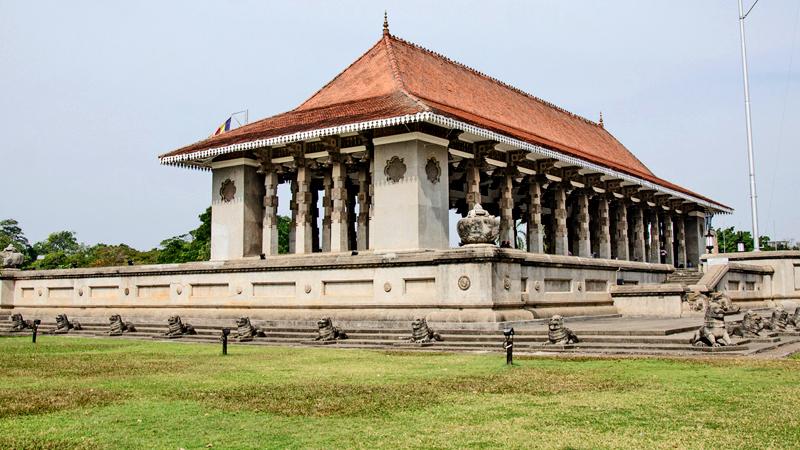
It is not every day that you get a chance to spend a morning leisurely in a place steeped in history, art, architecture and peace. It was a prominent vision of the imposing edifice that stood in the misty morning sun light when I entered Independence Square at Cinnamon Gardens, Colombo’s luxurious residential area that nestled in the heart of the bustling city. The Independence Square is a memento of our nation’s pride.
 We have read many stories about our independence, written by prolific writers during past years, but capturing the independence legacy visually, is perhaps less and limited. Therefore, I decided to visit and see the beauty of the Independence Commemoration Hall, a well known place that incorporates symbolic hallmarks of Sri Lankan native architecture.
We have read many stories about our independence, written by prolific writers during past years, but capturing the independence legacy visually, is perhaps less and limited. Therefore, I decided to visit and see the beauty of the Independence Commemoration Hall, a well known place that incorporates symbolic hallmarks of Sri Lankan native architecture.
Armed with my Nikon camera, the object of my visit was to capture the magnificent architectural beauty of the sprawling building. Here, the atmosphere is redolent of history, not just a magnificent tribute to Sri Lanka’s glorious past, its courageous heroes, its richness of Sinhalese art and architecture, but also of its proud liberation from colonial rule in 1948.
Sri Lankan architecture
I slowly climbed the short flight of steps on the right side of the ground and entered the massive chamber with thick square columns. The building is a beautiful blend of Sri Lankan architecture with a unique interior. This two-storied building with thick pillars, spacious halls paved with a marble floor, and high ceiling with floral motifs was built to keep the temperature cool in humid climate.
The most prominent feature of the monument, the Assembly Hall, is inspired by the Magul Maduwa, the Royal court of the Kandyan Kings. Incidentally, it was at the Magul Maduwa that the Kandyan chieftains handed over the island’s sovereignty to the British throne in 1815.
 The exterior of the Assembly Hall is decorated with Punkalasas pot of plenty, which signify wealth and prosperity.
The exterior of the Assembly Hall is decorated with Punkalasas pot of plenty, which signify wealth and prosperity.
The interior of the hall is supported by 60 pillars adorned with the famous 'Embekke' style wood carvings from the 14th century Gampola Kingdom. The concrete-built rows of lions are reminiscent of the famous 13th century Yapahuwa Kingdom tradition, while the Polonnaruwa Kingdom traditions are also visible in the sculptures around the halls. Located to the front of the monument is the statue of the first Prime Minister Rt. Hon. Don Stephen Senanayake, who commissioned the building of the Memorial Hall intending it to epitomise the country’s freedom struggle.
The larger-than-life statue is surrounded by a flower-shaped pond, and guarded by four lions that resembled the 13 century Yapahuwa Kingdom larger and more imposing than those that flanked the Hall. The pond and lion figures were added in the recent past.
After visiting the upper chamber of Independence Memorial Hall, I ventured into the basement which houses a museum exhibiting rows and rows of sculptured busts of national heroes who led the independence movement.
Museum
The museum features fascinating exhibits showcasing Sri Lanka’s colonial history and independence struggle as well as ancient literature and art. Most visitors to the site miss out seeing this museum. In fact, it is a must see site for schoolchildren.
Today, the Independence Square is not just a national monument but also a place to relax and enjoy the beauty of nature amid the historical edifices. A recently constructed shaded pathway at Independence Square gives tranquility, serenity and elegance to those who seek a relaxing gateway in the busy city. At the entrance to this stone pathway is a beautifully sculptured Sadakadapahana(Moonstone), usually placed at the entrances of Buddhist shrines. Bordered by ponds and sheltered by trees, the path is an ideal place to relax.
